In 1856, a thirty-five-year-old Scotsman named Alexander Gardner arrived in New York City to begin employment as a photographer for Matthew Brady’s celebrated portrait studio. Gardner had worked hard all his life in Scotland, having been variously occupied as a jeweler, a journalist, and finally as a newspaper editor. But his hobby and passion was science, and in the evenings, he taught himself the rudiments of optics, chemistry, and mathematics. When the new art of photography came into its own in the 1840s and 1850s, it was only natural that Gardner would be drawn to the field, and he soon became as expert as any man could be in its techniques.
Matthew Brady was the closest thing America had to an official “court” photographer. He owned galleries in New York and Washington, had won recognition in international exhibitions, and was sought out by the rich and powerful in both America and Europe. Anyone who was anyone in the 1850s wanted to sit for a photograph in one of Brady’s studios. One year after Gardner’s arrival in America, Brady asked him to manage his studio in Washington, D.C. The fact that Brady had paid for his passage to New York, and had appointed him to such a position of responsibility so quickly, makes it likely that Brady had discovered him during one of his European trips and had been impressed by the Scotsman’s intensity and self-taught knowledge.
Intense and visionary: Alexander Gardner in 1860
When the Civil War broke out in 1861, Brady was able to tap his government connections in Washington to get permission to accompany the Union armies in the field. Bored with the drudgery of static portrait photography, he was excited by the idea of using the new art form to record the events of history as they actually happened. Brady got what he asked for, but there was one unwelcome catch: he would have to finance his pet project himself. No government appropriation yet existed for such an untested enterprise. He was on his own.
War photography was not invented in the American Civil War. Battlefields of the Crimean War (1853-1856) had been photographed, but these were primitive and lifeless products, reflecting the experimental state of the art at the time. But improvements came quickly once Brady and Gardner applied themselves to solving the many technical difficulties presented by taking and developing photographs in the field. They invented a truly mobile photographic laboratory and darkroom, a horse-drawn wagon within which was contained all of the apparatus, chemicals, and equipment of the photographer’s art. One wonders what the soldiers of the Army of the Potomac must have made of this strange new contraption which needed to be kept scrupulously light-proof at all times.
Gardner’s images were exposed using the “wet-plate” method. Under yellow light, he or an assistant would coat a piece of clean glass with a mixture of chemicals called collodion (guncotton dissolved in alcohol and sulfuric ether, to which was added bromide and potassium iodide). The plate would be dried to exactly the right point, and then immersed in silver nitrate. It would then be quickly inserted into a sealed container and rushed to the camera outside the wagon, which had already been positioned on a tripod for the desired shot.
Any speck of dust, any particle of dirt, or any slight change in humidity could ruin a plate and void all the labor expended. It was a delicate, unforgiving process, requiring a deft hand and a sustained concentration. Exposure times were normally about ten seconds. The plate then had to be rushed back into the wagon immediately for developing. If the entire process took longer than ten or twenty minutes, the image could be ruined. As Brady and Gardner were spending their own money, they learned to work efficiently.
Bootless dead at Gettysburg
Gardner photographed many of the Eastern battlefields of the war, but parted with Matthew Brady in 1863. Setting up his own gallery in Washington, D.C., he recorded the dramatic events in the immediate aftermath of the war: Lincoln’s funeral, the trials of the Lincoln conspirators, and the trial of the infamous Henry Wirz, the commandant of Andersonville Prison, who was executed in 1865 for his brutal treatment of Union prisoners. Gardner left Washington in 1867 to head for the western frontier, and took many memorable photographs there for the Union Pacific Railroad before his untimely death in 1882.
Confederate sharpshooter at Gettysburg
Gardner’s unique contribution to the history of war photography appeared in 1866 with the publication of his two-volume Photographic Sketch Book of the War. No one had ever seen anything like it before. Each volume contained fifty full-page war photographs that had been taken by Gardner or his assistants; on facing pages were descriptions of the pictures’ context and relevance. Properly speaking, these were not “combat photographs” in the sense of having been taken during the actual fighting; they were post-combat pictures intended to show the devastation that resulted from modern war.
In Gardner’s day, there did not yet exist reliable techniques of mass producing photographic negatives for book publishing. What printers usually did was to hire an illustrator to make a lithograph, drawing, or engraving from an original photo, and then set this copy into a newspaper, magazine, or book. Gardner, ever the photographic purist, felt that this technique would diminish the visual impact of his war photos. So he made a remarkably bold decision: he would make his Sketch Book a collection of actual photographic positives, each individual photograph pasted carefully into its proper page.
Gardner’s masterpiece, which appeared in 1866
The idea was audacious, expensive, and a commercial failure. Because of the unique way the Sketch Book was prepared, the two volume set sold for a price of $150, which was a huge sum for a book in the 1860s. Sales were poor. The prohibitive price, and a general feeling of war fatigue in the public, meant that Gardner’s revolutionary book received little attention. It is estimated that only two hundred sets were printed, and for this reason it is today extremely rare. Doubtless it would today command a huge sum at auction. Inexpensive reprints began to appear in the 1950s, and these brought Gardner’s groundbreaking work to greater appreciation after decades of undeserved obscurity.
Grim harvest: burial of the dead at Cold Harbor
What are we to make of these photographs? In Gardner’s blasted buildings, shattered bridges, and open-mouthed corpses twisted in the agonies of death, we are immediately made aware of war’s reality. There is something disturbing in seeing a bullet-ridden farmhouse set against a scene of forests and pastures, and Gardner had a talent for such juxtapositions. Siege works, mortars, and field guns are lovingly studied by his camera, only to be followed by stark images of the effects of these weapons of war. Gardner may not have invented war photography, but under his hand the art form reached a depth and maturity that has rarely, if ever, been equaled.
Among many haunting passages, the following particularly resonate. Opposite a picture of skeletons excavated at the battlefield of Cold Harbor, he writes:
Among the unburied on the Bull Run field, a singular discovery was made, which might have led to the identification of the remains of a soldier. An orderly turning over a skull upon the ground, heard something within it rattle, and reaching for the supposed bullet, found a glass eye.
Opposite a photo of bloated and bootless Gettysburg dead, Gardner writes:
Some lay stretched on their backs, as if friendly hands had prepared them for burial. Some were still resting on one knee, their hands grasping their muskets. In some instances the cartridge remained between the teeth, or the musket was held in one hand, and the other was uplifted as though to ward a blow, or appealing to heaven. The faces of all were pale, as though cut in marble, and as the wind swept across the battle-field it waved the hair, and gave the bodies such an appearance of life that a spectator could hardly help thinking they were about to rise to continue the fight.
Twentieth century combat photography has perhaps dulled our appreciation of Gardner’s meditative and somber style. We now expect to be in the thick of the action as it happens. While this “real-time” technique has its undeniable merits, there is something to be said for a photograph taken immediately after a military engagement. Carnage is best expressed with a measure of reflection. Unlike real-time combat photography, Gardner’s photos are artistic compositions, planned out in minute detail.
There is a quiet, haunting power in these photos, in these panoramas of ruin, these abandoned earthworks, and in these bearded men with melancholy faces leaning up against blasted buildings. They impart a stillness, an awe in the soul, that is not easily forgotten. Gardner’s work was so far ahead of its time that his contemporaries lost sight of him. He stands as America’s prophet of total war, a harbinger of the earth-shaking violence that would convulse the world in the century to come.
Read More: The Shortness Of Life
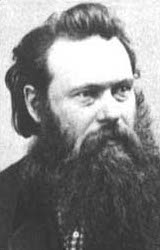
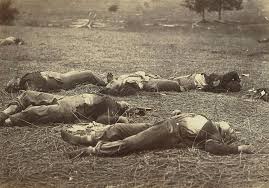
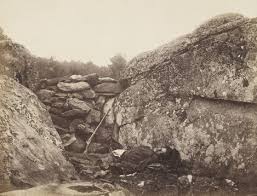
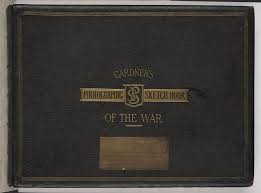
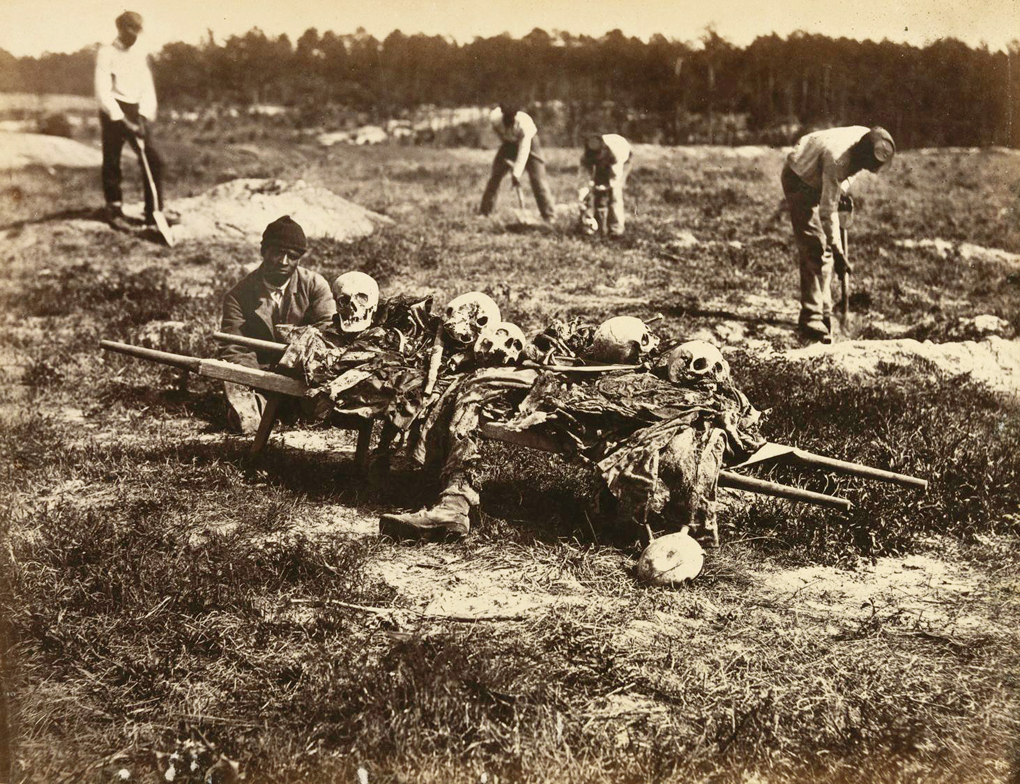
Well done RoK.
By disabling the option of users being able to post as a guest, and forcing them to create an account just to post a comment, you have managed to decrease the number of comments by at least 20%. And therefore the traffic will also be down by at least 15-20%
Well done!!
Least those who are able to comment are those who (theoretically) would be helping to contribute productively to the site.
The most interesting comments I’ve read here have all been by unregistered users.
They still record your e-mail. I don’t know how much better that really is when you consider the inconvenience compared to operating as a one-click registered user.
People who want to comment anonymously are more likely to be trolls, i.e. women, gays, and manginas. Sometimes quality is better than quantity.
There should be a separate ‘parking lot’ area on this site where females can go out to when they just can’t stop disrupting the table. The flood of jabber throws the whole place like the beta household is conquered with strategic non stop bitching. It is like loosing important emails amongst volumes of spam. Females are strategic and effective in creative noisemaking. It was difficult for me to get back on without having to all but show my ass to the satellite above. The bitch debate should have run its course outside without pulling the plug on all guests.
My ForiegnBride was born some 130 years after the invention of photography, so thankfully does not have to hold her awkward sexy poses for extended time periods whenever I haul out the camera.
Jesus will you stop boasting about your ForeignBride TM, we get it…
I tole you to change your handle to “The Subterranean”.
Basement dweller is a more fitting description of my current state of loserdom.
Btw, I’ve been following your comments for some time now and see that you use this word ‘Encopera’ to describe the shitty cubicle workplace many people deal with these days.
Where did you get this word? I’d like to co-opt it.
As your image consultant, I command you to stop thinking you are a loser. You are a winner. I post comments about my foreign wife to let you guys know there is potential for great life after 50 even after bad career fuckups.
“Encorpera” is a play on the non-words invented to name corporate entities that produce nothing except transient cubicle farms, where many of us work. It is a wholly owned-subsidiary of Global Pancorpera.
You are free to use it. Though I should probably trade-mark it so I can litigate when some marketing hack inevitably names a new company “Encorpera”.
But really it should be “Encwhorepera”, given how many females work there.
I think the real-time age of media also embeds viewers too closely with the combatants, giving them the feeling of being part of the action, even though they aren’t.
With this sort of delayed release however, you don’t feel that way, you just see the full and nasty effects in the aftermath.
Seeing these photos is a real experience. Hard to explain, but they have a power that is hard to convey in words.
I agree. The picture you posted of the Grim Harvest gives me such a deep and immense feeling I couldn’t do it justice by attempting to describe it. Looking at the entire photo album must hit hard.
A subject and focus of great depth only matched by the commentary itself. Once again Quintus Curtius delivers an outstanding piece. The effort and labour we take for granted in this digital age, the brutal realities captured in these compositions, and the singular masculine struggle of Gardner to doggedly blaze a new trail to his own tune are all expertly captured by our resident scholar.
I was especially struck by the fact his magnum opus was a commercial failure in his time… how often have we heard this tale? One can only wonder what his own reaction was. If redpill ideology is any indicator (of which he was undoubtebly a proscriber by our standards), he was satisfied with his accomplishments and kept striving forward, damn the popular reaction.
Thanks, WV. Appreciate that.
The victors moderate the written accounts that become textbook. Before photography, the artists moderated the visual accounts likewise. Does this mean that a photo is worth a thousand sketches and paintings?
Can’t say the Joos are good for nothing